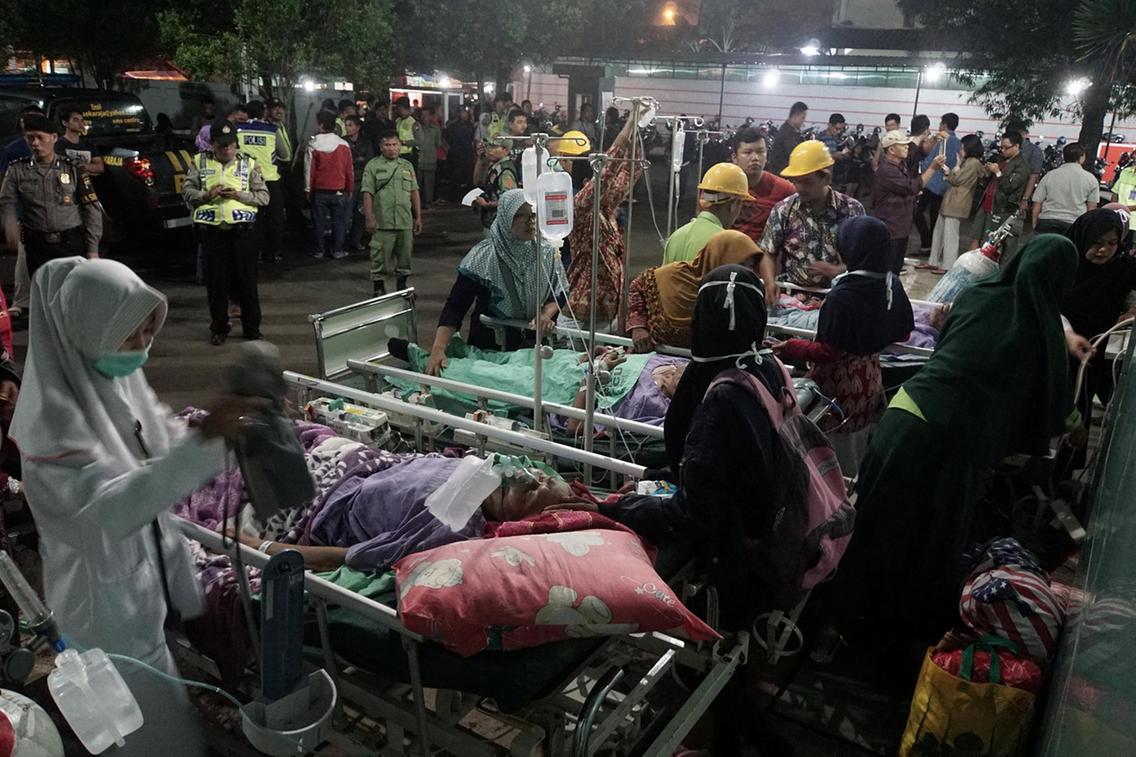
Patients are evacuated to a parking lot outside a damaged hospital after an earthquake hit the city of Banyumas, Central Java, Indonesia.
Jakarta, MINA – The 6.9-magnitude earthquake that struck the southern Java region on Friday night, killing at least two people and destroying scores of buildings, was triggered by the collision of the Indo-Australian and Eurasian plates, officials said.
The Meteorology, Climatology, and Geophysics Agency (BMKG) said the earthquake that occurred at 11:47 p.m. on Friday night was caused by subduction zone activity resulting from the collision of the Indo-Australian Plate with the Eurasian Plate in the South Java area.
“Based on its position and depth, the earthquake occurred due to the activity of the subduction zone formed by the collision or subduction of the Indo-Australian Plate against the Eurasian Plate in the southern Java area,” Antara News reported, citing Head of BMKG Earthquake and Tsunami Center Mochammad Riyadi in a statement received in Jakarta on Saturday.
The epicenter was located at 8.03 degrees southern latitude and 108.04 degrees eastern longitude at a depth of 105 kilometers. In its revised data, the BMKG noted that the quake`s magnitude was recorded at 6.9 on the Richter scale at 7.75 degrees southern latitude and 108.11 degrees eastern longitude at a depth of 107 kilometers.
Also Read: Thousands Arrive for “1,000 Volunteers for Gaza Reconstruction” Assembly in Jakarta
The earthquake was centered at 42 kilometers southwest of Kawalu, West Java. This earthquake
could trigger a tsunami in southern West Java, Central Java, and Yogyakarta.
From the recordings of tide gauge stations close to the epicenter, there was no recorded sea level rise. To that end, BMKG ended its tsunami early warning at 02:26 p.m.
Further, from its monitoring results up to 02:14 a.m. on Saturday, BMKG noted that three rounds of aftershocks had occurred, with a magnitude of 3.2, 3.4, and 3.2.
Also Read: KH Anwar Iskandar Re-Elected as Chairman of Indonesia’s Ulema Council for 2025–2030
Based on the results of shock-level analysis (shakemap), the intensity of the earthquakes was potentially felt around Tasikmalaya, Bandung, Kebumen, Karangkates, Yogyakarta, Jakarta, Depok, Ngawi, Madiun, Nganjuk, and Mataram.
“People are encouraged to stay calm and follow local disaster mitigation agencies` (BPBD`s) directives and BMKG`s information, so they will not be fooled by irresponsible reporting on the earthquake and tsunami, while remaining alert to the occurrence of aftershocks whose magnitude is generally decreasing,” he stated.
Meanwhile, the National Disaster Mitigation Agency (BNPB) said two people died in the Friday night earthquake.
Head of Information and Public Relations Center of BNPB Sutopo Purwo Nugroho, in his short message in Jakarta on Saturday, said the two people who died are Dede Lutfi, 62, a Gunungsahari Village resident in Ciamis District, West Java, and Aminah, 80, a resident of Sugihwaras, Pekalongan, Central Java.
Also Read: MUI Warns Government of Risks Behind Proposed Stabilization Force Deployment to Gaza
“Both victims died after being buried under a wall that collapsed during the earthquake,” stated Sutopo. In addition to the death toll, the BNPB report also mentioned that the earthquake had caused seven people to be injured, while 43 homes were destroyed, 65 houses were modestly damaged, 10 others were slightly damaged, and some public buildings suffered damage.
The impact of the earthquake in West Java caused one fatality, severe damage to 17 houses, moderate damage to 59 houses, and slight damage to 10 houses.
In Central Java, one person died, one person was seriously injured, 26 houses were severely damaged and collapsed, and six houses were damaged.
Areas affected by the earthquake and suffering damage include Pangandaran, Tasikmalaya, Ciamis, Banjar, Garut, Cilacap, Kebumen, Pekalongan, Banyumas, Brebes, and Banjarnegara.
Also Read: Prof. El-Awaisi: The Mandate to Liberate Al-Aqsa Began at Prophethood
Since the epicenter is located six kilometers southeast of Bantarkalong City, Tasikmalaya District, the areas that experienced damage and were hit hard by aftershocks are in the Tasikmalaya, Pangandaran, and Ciamis districts in West Java Province.
Some hospitals were damaged, so patients were taken outdoors. For example, Banyumas Hospital suffered damage to the ceiling, cracked walls, and leakage of the installed oxygen gas pipeline.
Running to higher ground for fear of tsunami
Sutopo claimed that most of the people who had been evacuated during the tsunami early warning have been allowed to return home.
Also Read: Mount Semeru Erupts, Trapping Dozens, Forcing Evacuations in East Java
“There is no tsunami due along the south coast of Java. Aftershocks have occurred as many as seven times at low magnitude. There has been no impact or damage from the aftershocks, and public activity has returned to normal,” explained Sutopo.
Thousands of people in Central Java`s Cilacap District reportedly fled their homes after the earthquake hit the southern coastal areas of Java.
Many of the residents in the southern coastal areas of the district had evacuated to higher ground, day-to-day chief of Cilacap District`s BPBD Tri Komara Sidhy said early Saturday.
“They have evacuated to higher ground on their own. Based on information from the BMKG, the earthquake had the potential to cause a tsunami in West Java, while Cilacap is on alert,” he remarked.
Also Read: President Prabowo Inaugurates UAE-Funded Emirates–Indonesia Cardiology Hospital in Solo
The BPBD is still monitoring conditions in the field as the coastal areas had experienced low tide during the earthquake, he said.
Separately, chief of the Pandanarang fishermen group Tarmuji pointed out that most of the people living near Penyu Bay had fled to various areas.
“Most of the residents have evacuated. Several fishermen and I are currently monitoring the coast. The sea level is normal, and the coast is not experiencing low tide,” he noted at around 12:30 a.m. on Saturday. T/RS5/RS1)
Mi’raj Islamic News Agency (MINA)







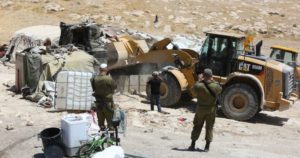
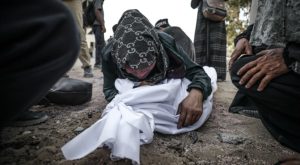




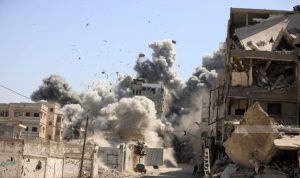
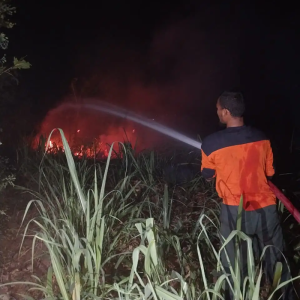
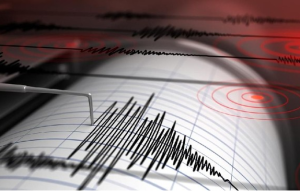
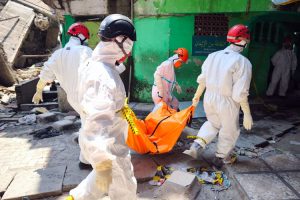
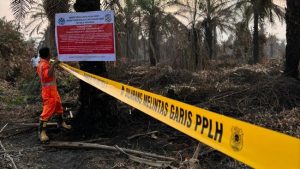
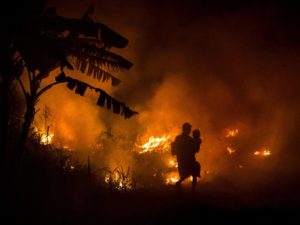
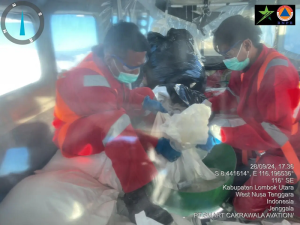



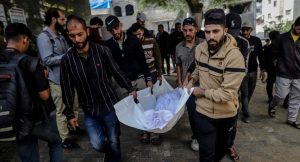
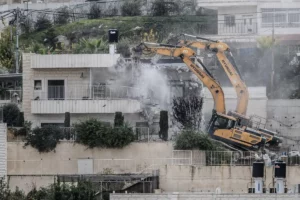
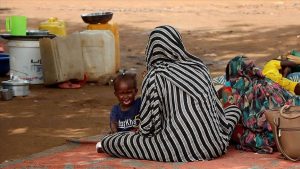





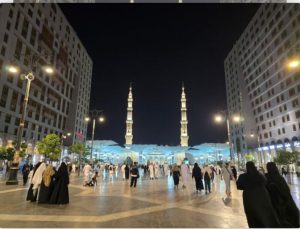

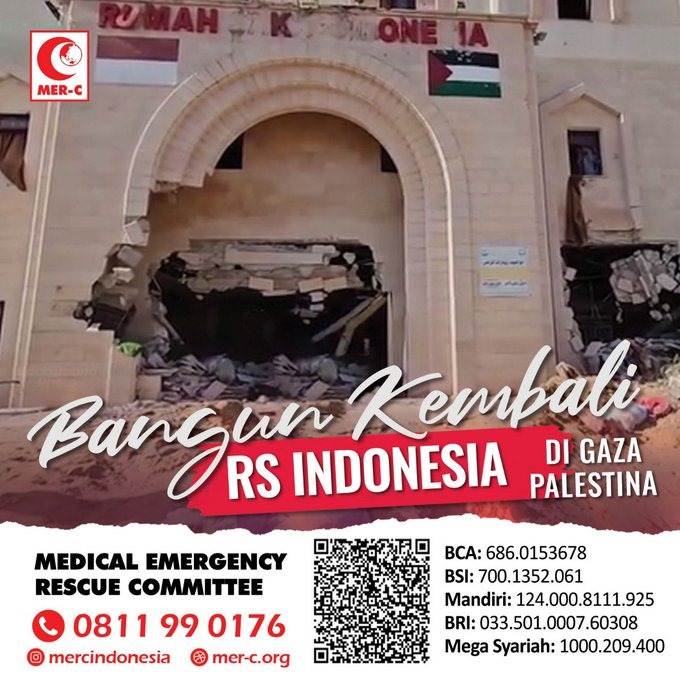
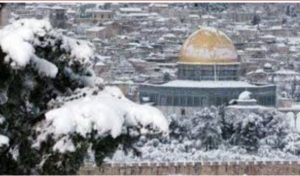

 Mina Indonesia
Mina Indonesia Mina Arabic
Mina Arabic